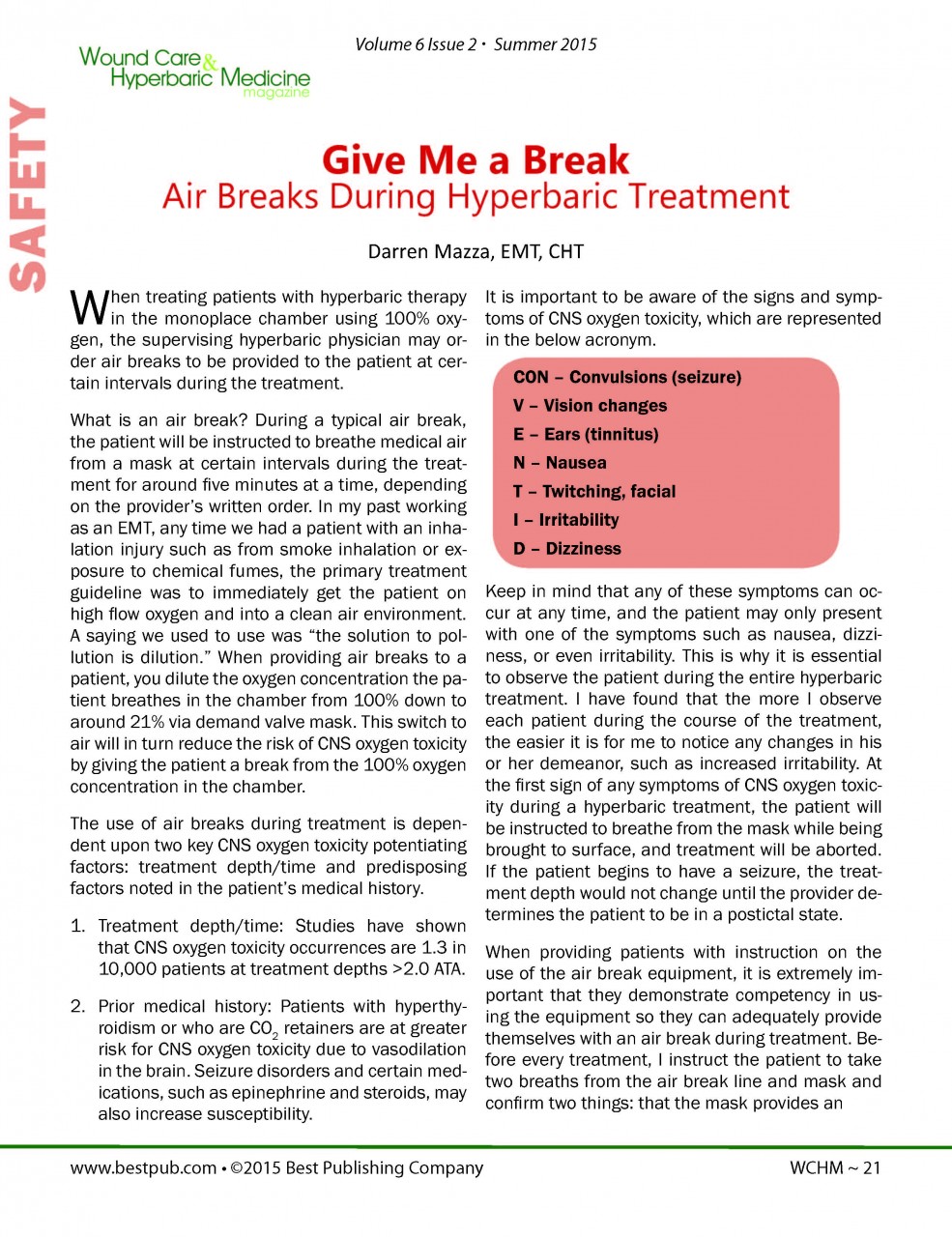What kind? Did you convulse? Have symptoms underwater? Pulmonary issues after the dive?My tox in 2010 happened at 6m
And what was the exposure?
Welcome to ScubaBoard, the world's largest scuba diving community. Registration is not required to read the forums, but we encourage you to join. Joining has its benefits and enables you to participate in the discussions.
Benefits of registering include
What kind? Did you convulse? Have symptoms underwater? Pulmonary issues after the dive?My tox in 2010 happened at 6m
Anecdotally, I am aware of guys who have had pulmonary symptoms on extreme exposures.
Like many things in technical diving, air breaks seem to not have a consensus among the scientific and agency communities (eg deep stops, optimal GF, etc).
Looking for any scientific studies that helps shed light on the following:
1) are air breaks effective in reducing oxygen toxicity/seizure hits?
2) if yes, what the recommended air break method is (12/6, 20/5, etc)
I know Simon Mitchel is on here; if someone knows how to @ his user that would be great

@nickbutcher I’m also very interested to know the detailsWhat kind? Did you convulse? Have symptoms underwater? Pulmonary issues after the dive?
And what was the exposure?
This is the report I wrote shortly after. I do many things differently now (13 years later):What kind? Did you convulse? Have symptoms underwater? Pulmonary issues after the dive?
And what was the exposure?
Per one of doctors here, there was a fatal CNS case on OC at 1.3 with a female cave diver some years ago.I don't know of any such studies, and I seriously doubt there are any. How would you conduct them?
In all the reading I have done in related issues over the years, I have never heard of oxygen toxicity taking place in shallow water during a decompression stop. One could say that proves that air breaks help, or one could say that there might never have been a need for them in the first place.
Every case of oxygen toxicity that I know of has occurred at greater depths with people using incorrect mixes for the depth. It is usually a labeling error.
The use of air breaks is because of a concern about pulmonary oxygen toxicity. I don't know of any cases of pulmonary oxygen toxicity at any depth. I am not saying it hasn't happened; I am just saying I have never heard of one.
Per one of doctors here, there was a fatal CNS case on OC at 1.3 with a female cave diver some years ago.
In all the reading I have done in related issues over the years, I have never heard of oxygen toxicity taking place in shallow water during a decompression stop.
Per one of doctors here, there was a fatal CNS case on OC at 1.3 with a female cave diver some years ago.
I'm confused. Is this an example of "oxygen toxicity taking place in shallow water during a decompression stop"?2007, they were using 24/25 with a max depth of 150ft.
You can pull the accident report up on the IUCRR website.
You said it only happens at very high O2 pp. True, if you consider 1.3 to be very high. But typically people mean above 1.6 when they talk about very high. And then there was the poster who mentioned his little issue at 20ft.I'm confused. Is this an example of "oxygen toxicity taking place in shallow water during a decompression stop"?
